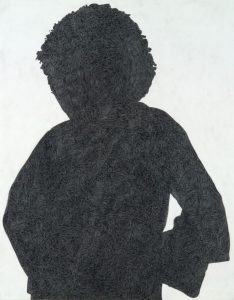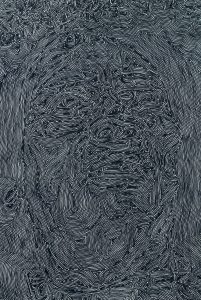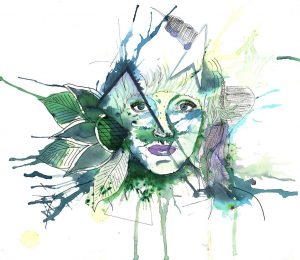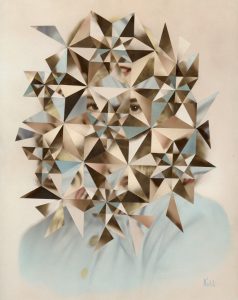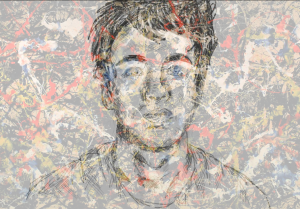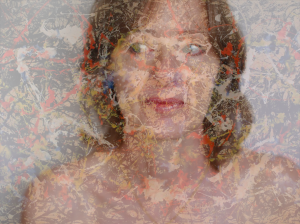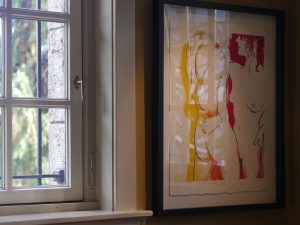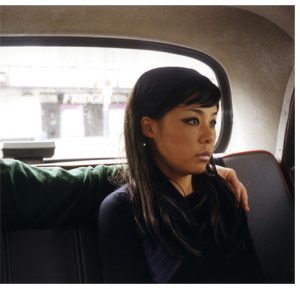For this task, I am looking at the work from artist Alex Brown, the piece shown above is an ink drawing on paper, size 28×22 inches a little bit smaller than A1. In the first image, you can clearly see the outline of a person which comes across as a silhouette, creating simply the presence of a person. When you look closer to the drawing you can see many details of swirled lines which outline features of the drawing.
Considering this piece is already fairly large I’m going to imagine it on a much larger scale, as though the work was bigger than the viewer. This would create more of a chaos, similar to the effect of Monet’s water lilies, a picture would not do it justice. Brown’s technique of adding detail in such an intricate way would need to be increased, maybe even add to the background or work with the negative space. If you were to do the same pattern in the background, then the person would blend in and the idea of the presence of the person would no longer work. However, blowing this piece up into such a larger work would have a great impact on the viewer, especially when getting close and being able to see all the small intricate patterns within the silhouette of the person.

